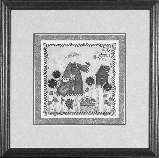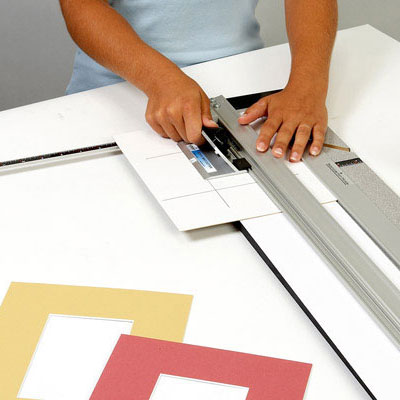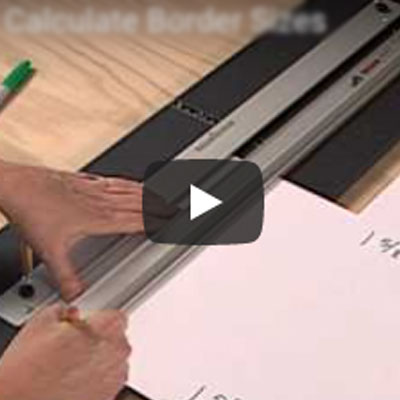Matting is a border that surrounds artwork. It is usually made from matboard, a type of board manufactured especially for this purpose. The matboard is cut to size, then one or more holes (openings) are cut in the matboard to serve as windows for displaying art. The mat provides important practical functions, and it has a visual purpose as well.
Presentation
Mats are an important part of the visual presentation in picture framing. Matting can be used to highlight a color in the artwork or room decor, accent a shape in the art, or simply increase the size to make a dramatic display (especially for small pieces). Matting may consist of a single piece of matboard with one rectangular opening cut in it, but there are also double mats, triple mats, oval mats, and numerous other decorative shapes and styles.
Support

The mat and its backing board provide a sandwich of support for artwork. The mat protects (and hides from view) the hinges or other means of attachment that hold the art in place. Artwork may be attached to the underside of the window mat if the picture is small, or to the backboard for larger pieces. Attachment to the backing board is preferred by professional framers.
Matting can help to protect artwork. For artists and collectors, a mat allows unframed art to be handled without touching the art.
Air Circulation
A mat allows air circulation between the art and the glazing material (the glass or plastic sheet that covers the art in a frame.) This air space is important: prints, photographs, and needlework should not be placed directly against glazing because moisture that condenses inside a framed piece becomes trapped and could cause mildew, mold and buckling. Glossy art pressed against glazing may stick to it.
Room for Expansion
Because paper expands and contracts with changes in humidity in the environment, space must be allowed within a frame for paper artwork to move a little bit, from side to side and top to bottom. Artwork properly suspended in a mat has room for these movements.












